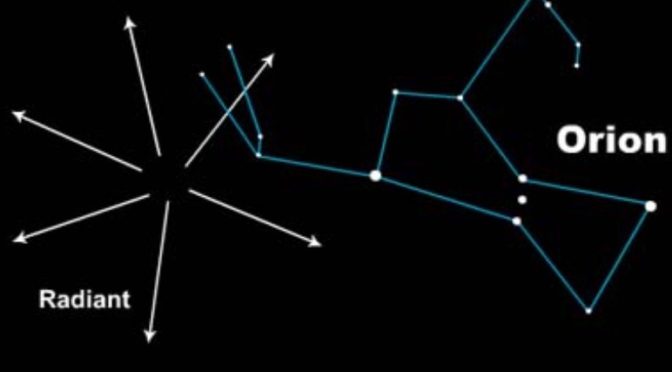Thanks to our friends at www.earthsky.org for keeping us up-to-date with these wonders above us!
HEY GANG…Awesome…whatcha doing tonight? Join me in the dark…and LOOK UP!
“The meteors – vaporizing bits of comet ice and dust – will look like streaks of light in the night sky. They’re sometimes called shooting stars.
The night of October 20, 2016 [TONIGHT] is the probable peak night of the annual Orionid meteor shower.
The meteors should become visible, starting at late evening on October 20, but will probably be most prolific in the few hours before dawn on October 21.
From a dark site, you might see a maximum of about 10 to 15 meteors per hour, although the moonlit glare will prove troublesome this year.
As is standard for most meteor showers, the best time to watch this shower will be between the hours of midnight and dawn – regardless of your time zone.”
…the predawn and dawn sky offers a great view of star-like object Sirius, the sky’s brightest star. Then, rising in the east a few hours before sunrise, look for the dazzling planet Jupiter, the brightest star-like object in the morning sky.”
Thanks to our friends at www.earthsky.org for keeping us up-to-date with these wonders above us!

